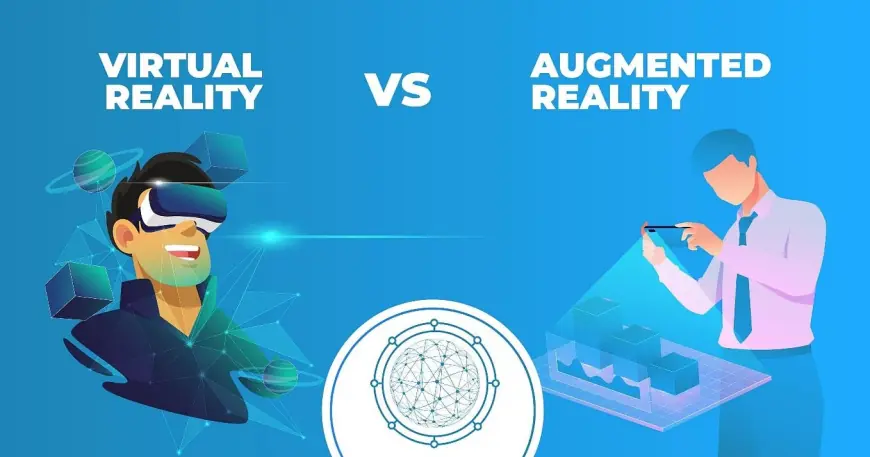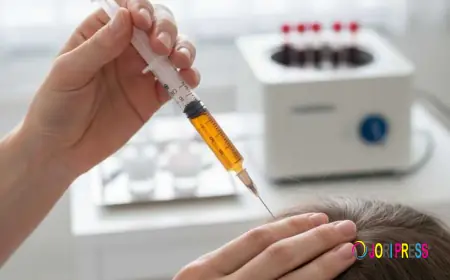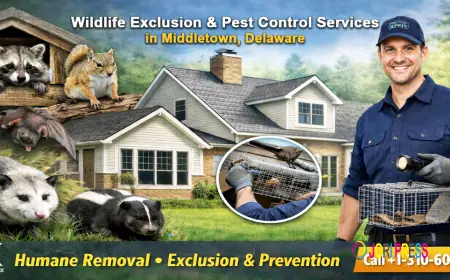Augmented and Virtual Worlds: Global Market Dynamics

The global augmented reality (AR) and virtual reality (VR) market is transforming the way people interact with digital content, bridging the gap between physical and digital environments. AR overlays digital elements in the real world, while VR offers a fully immersive digital experience. Together, these technologies are revolutionizing industries including entertainment, education, healthcare, retail, manufacturing, and defense.
Originally associated with gaming and entertainment, AR and VR have rapidly evolved into powerful tools for training, simulation, design, collaboration, and customer engagement. With growing investments, rising consumer and enterprise adoption, and technological advancements in hardware and software, the AR and VR market is poised for significant expansion through 2032.
As AR and VR converge with artificial intelligence, 5G, cloud computing, and spatial computing, their role in reshaping digital interaction and immersive experiences is becoming increasingly central to global digital transformation.
Market Overview
AR and VR technologies encompass a wide spectrum of devices (headsets, smart glasses, sensors), software platforms, and applications. The market is divided into consumer and enterprise segments, with consumer applications (gaming, media, and entertainment) leading early adoption, while enterprise use cases (training, remote collaboration, and design visualization) are rapidly scaling.
As demand for real-time 3D (RT3D) content and extended reality (XR) platforms increases, the global AR and VR market is expanding across sectors, geographies, and user demographics.
Click here to download a sample report
Key Market Drivers
- Rising Demand for Immersive Experiences
Consumers and businesses are increasingly seeking engaging, interactive experiences for entertainment, learning, and collaboration. - Technological Advancements in Hardware and Graphics
Improvements in display quality, computing power, sensors, and battery life are making AR/VR more viable. - Enterprise Adoption Across Sectors
Industries such as healthcare, automotive, retail, and construction are integrating AR/VR for training, simulation, and product visualization. - Growth of the Metaverse and Digital Twins
Virtual worlds and real-time 3D representations are driving platform development and content creation. - Increasing 5G Deployment and Edge Computing
High-speed, low-latency networks are enabling smoother, real-time AR/VR streaming and remote access.
Market Segmentation
By Technology:
- Augmented Reality (AR)
Includes marker-based AR, markerless AR, projection-based AR, and superimposition-based AR. - Virtual Reality (VR)
Includes fully immersive VR, non-immersive VR, and semi-immersive VR systems. - Mixed Reality (MR)
Combining elements of AR and VR for hybrid applications.
By Device Type:
- Head-Mounted Displays (HMDs)
VR headsets and AR smart glasses used across consumer and professional applications. - Handheld Devices
Smartphones and tablets with AR capabilities through camera overlays and apps. - Gesture-Tracking Devices and Sensors
Used for spatial recognition, motion tracking, and haptic feedback in immersive environments. - Others
Includes projection devices, spatial audio systems, and wearable computing units.
By Application:
- Gaming and Entertainment
Leading AR/VR segment, including immersive gaming, 360° videos, and virtual concerts. - Healthcare
Used in medical training, surgical simulation, therapy, and patient education. - Retail and E-commerce
Virtual try-on, 3D product visualization, and augmented shopping experiences. - Education and Training
Immersive learning platforms and simulation-based instruction for schools and corporate training. - Manufacturing and Automotive
Design prototyping, remote maintenance, assembly line training, and safety procedures. - Real Estate and Construction
Virtual property tours, building modeling, and architectural visualization. - Military and Defense
Combat simulation, battlefield training, and equipment visualization.
Regional Insights
North America
Leading AR/VR market due to advanced technology infrastructure, major tech company presence, and high consumer adoption. The U.S. remains at the forefront of AR/VR innovation and investment.
Europe
Strong growth driven by enterprise applications in automotive, healthcare, and industrial design. Germany, France, and the U.K. are major markets.
Asia-Pacific
Fastest-growing region, supported by high smartphone penetration, government initiatives in immersive tech, and leading AR/VR manufacturers in China, Japan, and South Korea.
Latin America
Emerging AR/VR market with growing adoption in gaming, education, and marketing. Brazil and Mexico are key contributors.
Middle East & Africa
Gradual adoption of AR/VR in real estate, education, and retail. Increasing public and private sector interest in immersive tech.
Competitive Landscape
The AR and VR market is characterized by rapid innovation and intense competition, involving large technology companies, specialized hardware manufacturers, software developers, and platform providers.
Key Strategic Activities:
- Product Development and Upgrades
Frequent hardware iterations focused on lighter design, higher resolution, and better user comfort. - Content Partnerships and Ecosystem Expansion
Collaborations between platform providers, content creators, and industries to enrich AR/VR ecosystems. - Platform Convergence with AI and Cloud
Integration with artificial intelligence, 3D engines, and cloud infrastructure for scalable and intelligent AR/VR systems. - Investments in Startups and XR Studios
Major firms are funding innovation through incubators and acquisitions in AR/VR gaming, tools, and enterprise solutions. - Standardization and Interoperability Initiatives
Industry consortia are working toward unified frameworks for cross-device and cross-platform compatibility.
Technological & Product Trends
- Standalone VR Headsets
Devices like Oculus Quest have eliminated dependence on external PCs, enabling greater user freedom. - AI-Driven AR Experiences
Computer vision and contextual recognition enhance interactivity and personalization. - Cloud-Based Rendering and Streaming
Real-time delivery of high-fidelity AR/VR content over cloud networks is improving scalability. - Haptic Feedback and Immersive Audio
Tactile and spatial sound systems are deepening the sense of presence in virtual environments. - AR Smart Glasses for Enterprise and Consumer Use
Lightweight, functional glasses are being developed for logistics, manufacturing, retail, and remote support.
Challenges and Restraints
- High Development and Deployment Costs
AR/VR hardware and content creation remain expensive, limiting mass adoption. - Limited Content and App Ecosystem
Lack of high-quality, platform-specific content can hinder user engagement and retention. - User Discomfort and Motion Sickness
VR-induced nausea and ergonomic issues affect long-term usability. - Privacy and Security Concerns
AR/VR data tracking and biometric capture raise ethical and regulatory issues. - Fragmented Market with Competing Standards
Lack of interoperability and hardware compatibility complicates developer efforts and user experience.
Future Outlook (2024–2032)
The global AR and VR market is projected to grow rapidly through 2032, fueled by:
- Increasing enterprise and government investment in immersive technology
- Consumer demand for next-generation entertainment and digital interaction
- Greater convergence with AI, 5G, blockchain, and IoT ecosystems
- Expansion of XR education, healthcare, and industrial training platforms
- Development of lightweight, affordable AR glasses and all-in-one VR headsets
As AR and VR move from experimental to essential tools across sectors, the market will mature into a foundational pillar of the digital experience economy.
Conclusion
The global AR and VR market represents a transformative shift in how humans perceive, interact with, and interpret digital content. From immersive storytelling and virtual collaboration to precision training and virtual commerce, these technologies are unlocking new dimensions of experience.
What's Your Reaction?
 Like
0
Like
0
 Dislike
0
Dislike
0
 Love
0
Love
0
 Funny
0
Funny
0
 Angry
0
Angry
0
 Sad
0
Sad
0
 Wow
0
Wow
0
















































